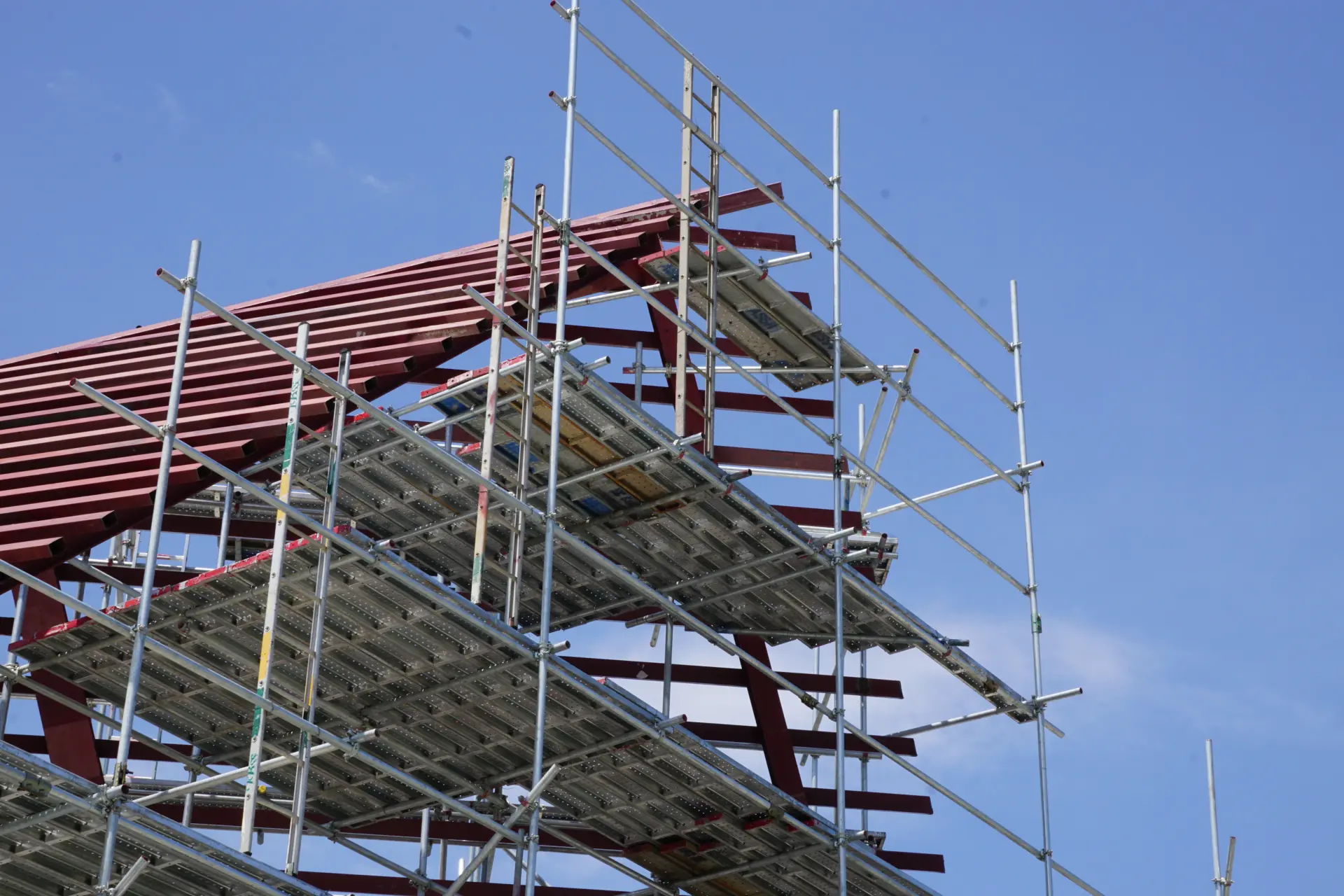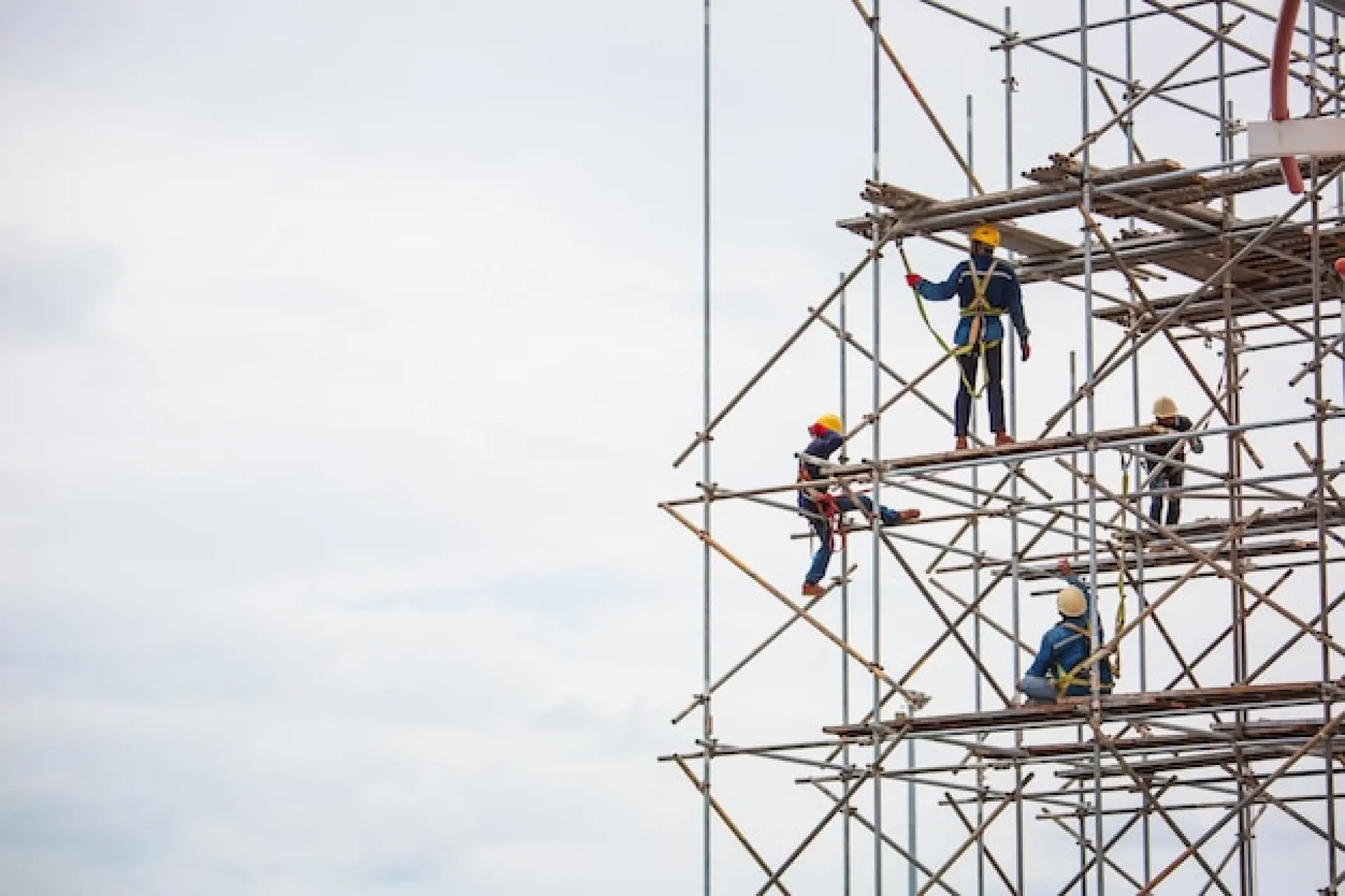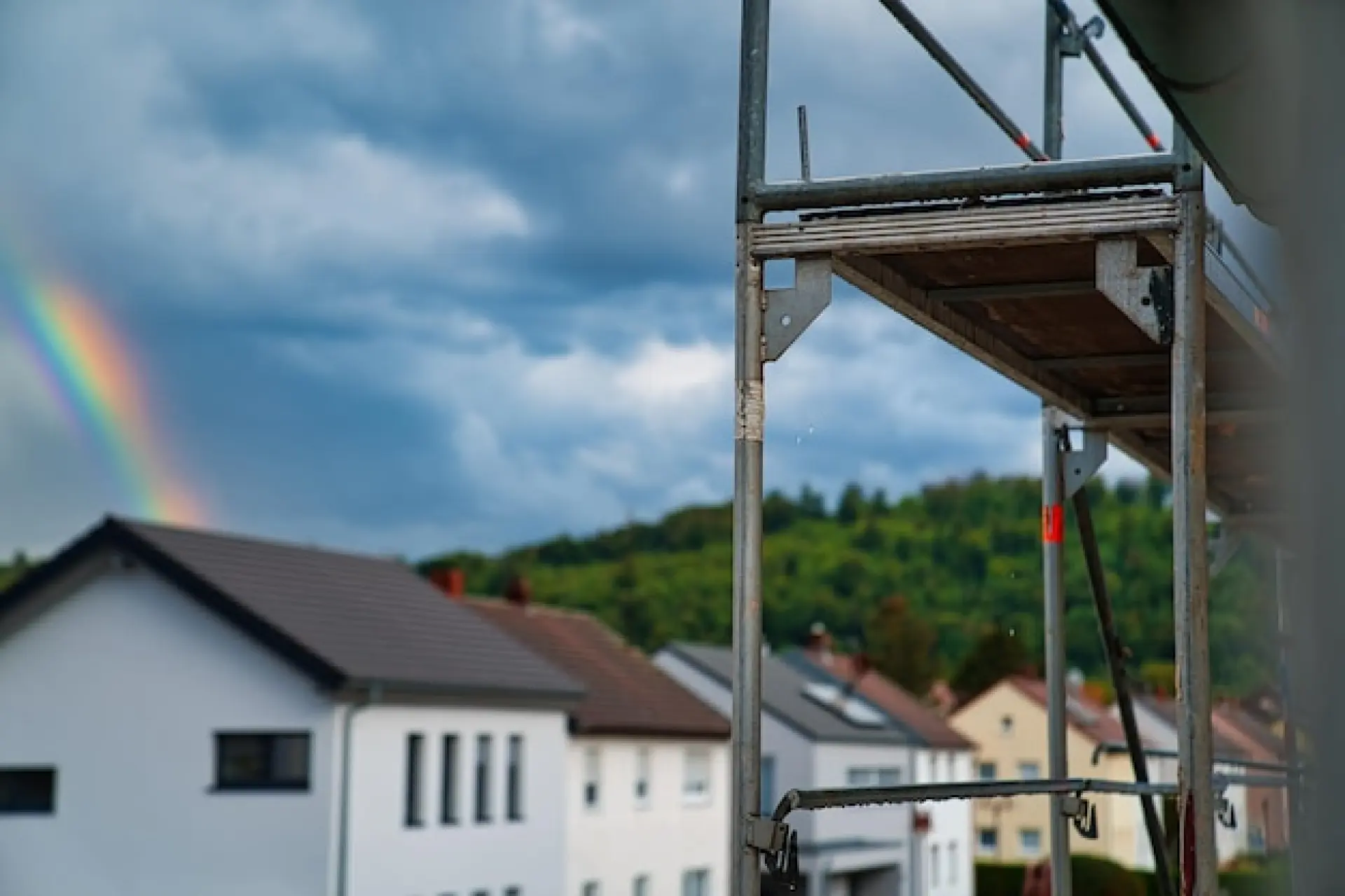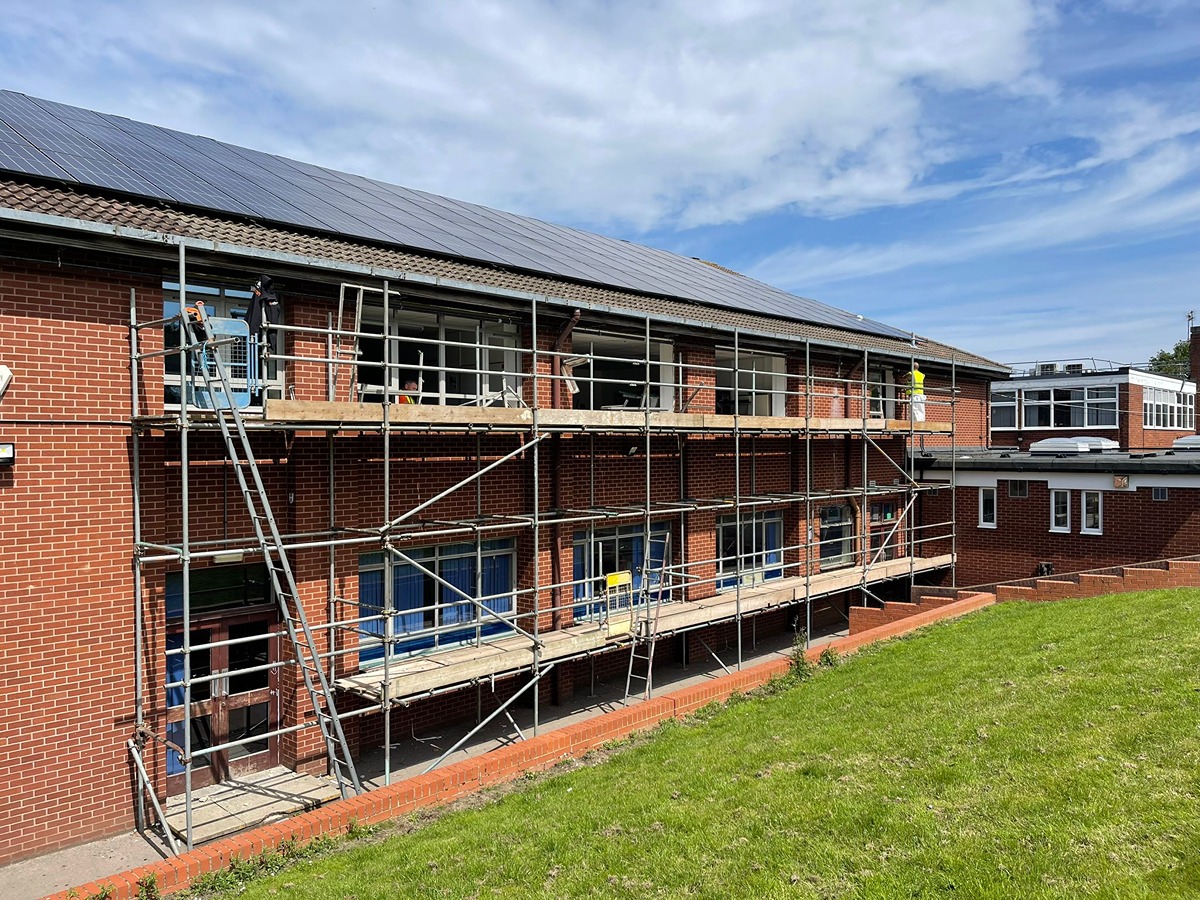Why Temporary Roof Structures Are Needed on Site
Temporary roof structures are essential on construction sites because they turn unpredictable weather into a manageable risk. By creating a sealed canopy over the work area, temporary roof scaffolds provide a dry, stable environment that allows workers to continue with their project regardless of the weather.
Many building materials, such as timber, screeds, roofing membranes, adhesives and coatings, all need specific moisture conditions to cure and perform. Water ingress or high humidity levels can lead to ruined plaster, warped timber, delaminated boards and failed membranes. A temporary roof structure can stabilise the moisture levels, prevent wind-driven rain, and limit the rate of condensation.
Wet decks, ladders and access routes are all big slip risks during construction projects. However, a temporary roof structure can reduce the amount of surface water and wind exposure on-site, which can improve your safety and compliance with CDM regulations. The roof cover also helps contain debris and secures any loose materials during storms, which is especially important on constrained or occupied sites.
Protecting Buildings and Workers from Weather
Temporary roof scaffolding shields both buildings and people from harsh weather by creating a controlled, weather-tight envelope around the work zone. Lightweight trusses span above the structure using tensioned keder sheets or shrink-wrap to form a continuous canopy that deters rain and wind. Properly detailed laps, collars around penetration points, and sealed interfaces with facade screens also prevent wind-driven rain from curling underneath the roof, while clip-on gutters and downpipes channel water away from the scaffold base.
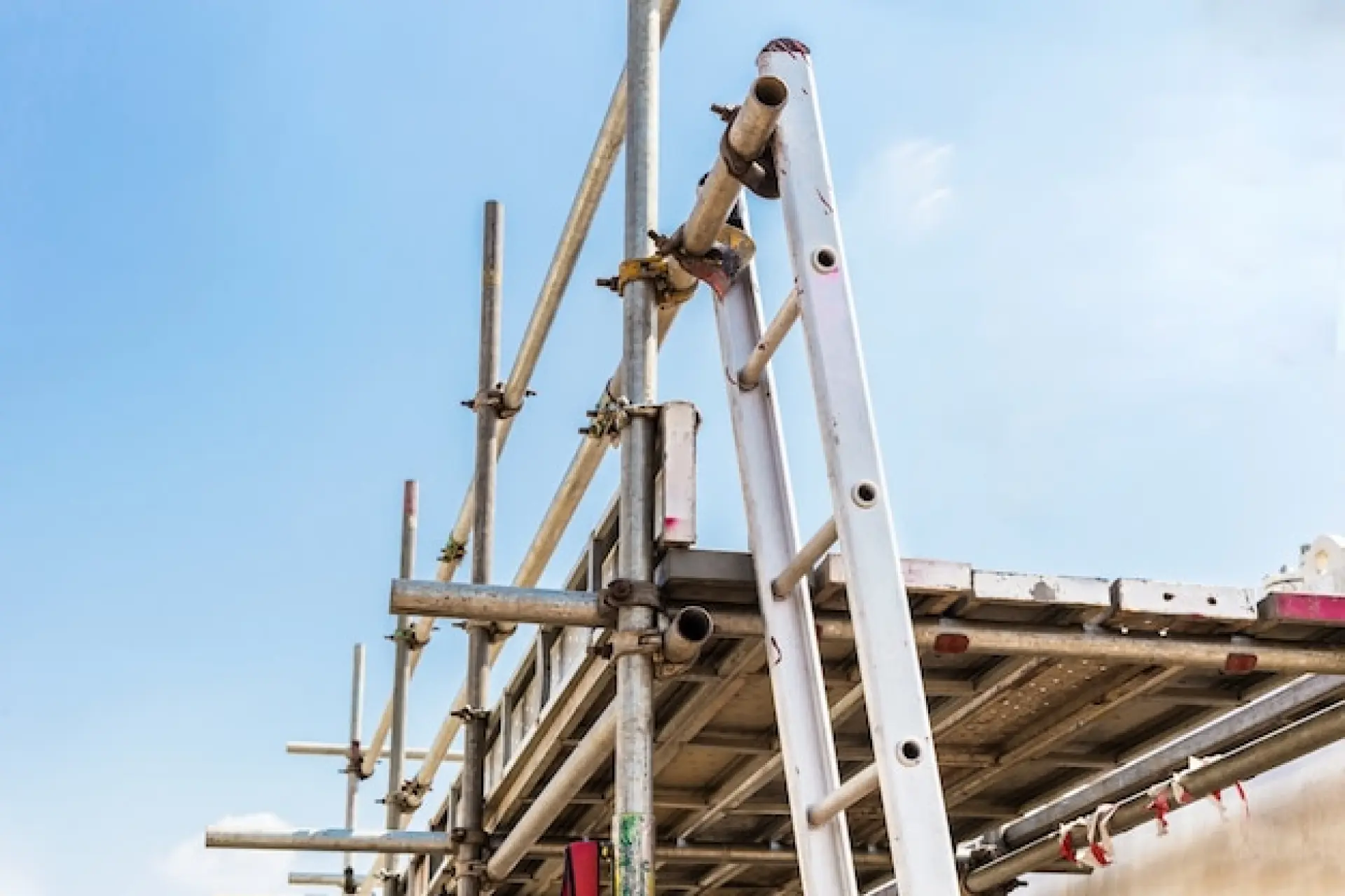
For the building, a dry, stable environment protects vulnerable substrates and finishes. Timber, screeds, roofing membranes, adhesives and coatings all rely on specific moisture and temperature conditions to cure, and exposure to water can lead to swelling, delamination, blistering and failed bonds. By excluding rain and moderating drafts, a temporary roof cover protects the plaster, electrics, insulation and fabric, and reduces the risk of remedial work. Anti-ponding straps and cambered ridges are also used to stop water from pooling and overloading the frame, and controlled ventilation measures are used to limit condensation.
Operationally, temporary roofs keep projects moving when weather would otherwise stop tasks like strip-and-recover roofing, leadwork and timber repairs. In short, temporary roof scaffolding turns severe weather from a project-stopping hazard into a manageable risk.
How Temporary Roof Scaffolding Helps Keep Projects on Track
Temporary roof scaffolding keeps projects on track by turning weather risks into a controllable variable. By spanning lightweight trusses over the work area and sealing them with tensioned keder sheets or shrink-wrap, workers gain a dependable, dry environment that isn't affected by rain and wind. Materials like membranes, screeds, adhesives, and coatings all have specific moisture and temperature conditions; a covered, ventilated canopy stabilises the environment so that the curing times are reliable and the risk of any rework is minimised.
Drier decks reduce the risk of slips, braced frames and anti-lift restraints keep the coverings secure, and natural light through translucent sheets improves your visibility. Fewer weather-related issues mean that there are fewer stops or redesigns, which can help the project run faster. Moveable bays on tracks also let workers open up sections for crane lifts or material drops, then reseal the cover quickly to maintain the roof's protection without disrupting the project.
Safety Benefits for Construction Teams
Temporary roof scaffolding sheds rain and deflects wind, which helps reduce slip risks on scaffold boards, ladders, and temporary stairs. The braced frames, rakers, and wind-lock clips create defined load paths so that there's no risk of uplift or racking, which is crucial for preventing the sheets from unzipping or tearing during storms. Anti-lift restraints, storm lashings, and appropriately spaced ties to the main building reduce the risk of collapses, while anti-ponding measures stop water from accumulating and pooling.
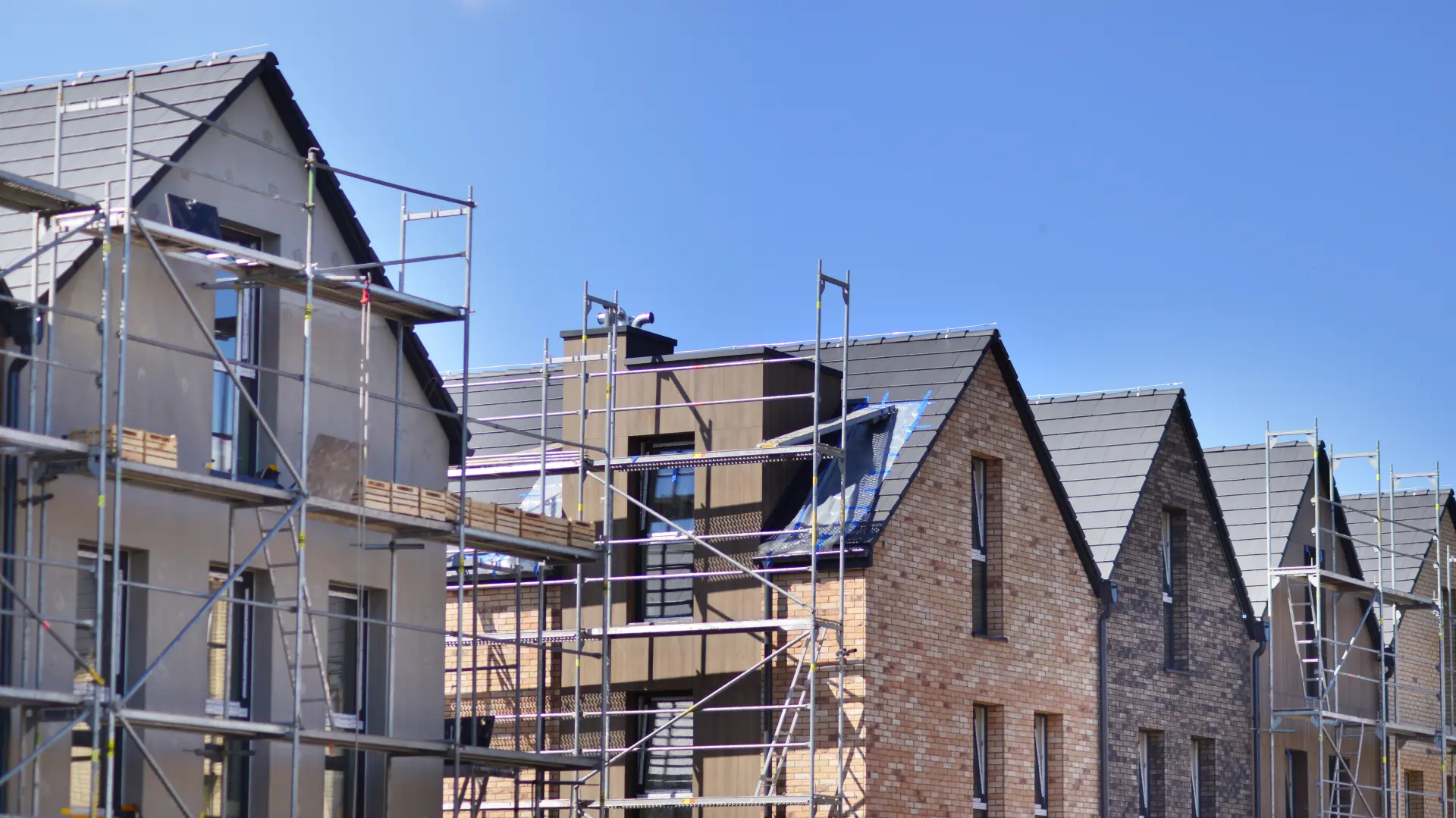
A temporary roof cover integrates guardrails, toe boards, debris netting, and sealed perimeters to contain materials that might otherwise be blown off. Additionally, the clear or translucent sheeting lets in daylight, which can improve your visibility during winter and lower the risk of falls or accidents.
Temporary roofs also protect the building's fabrics and electrics, which also improves your safety on-site. By keeping interiors dry, the risk of energised circuits, swelling floors, and mould can be removed - and controlled ventilation helps to reduce condensation.
Keep your projects dry, safe and on schedule with our temporary roof scaffolding! We can supply, install and maintain lightweight, storm-rated roof covers that divert rain, control runoff, and let in natural light. Our temporary roof scaffolds are ideal for re-roofing projects, refurbishments and heritage works.
